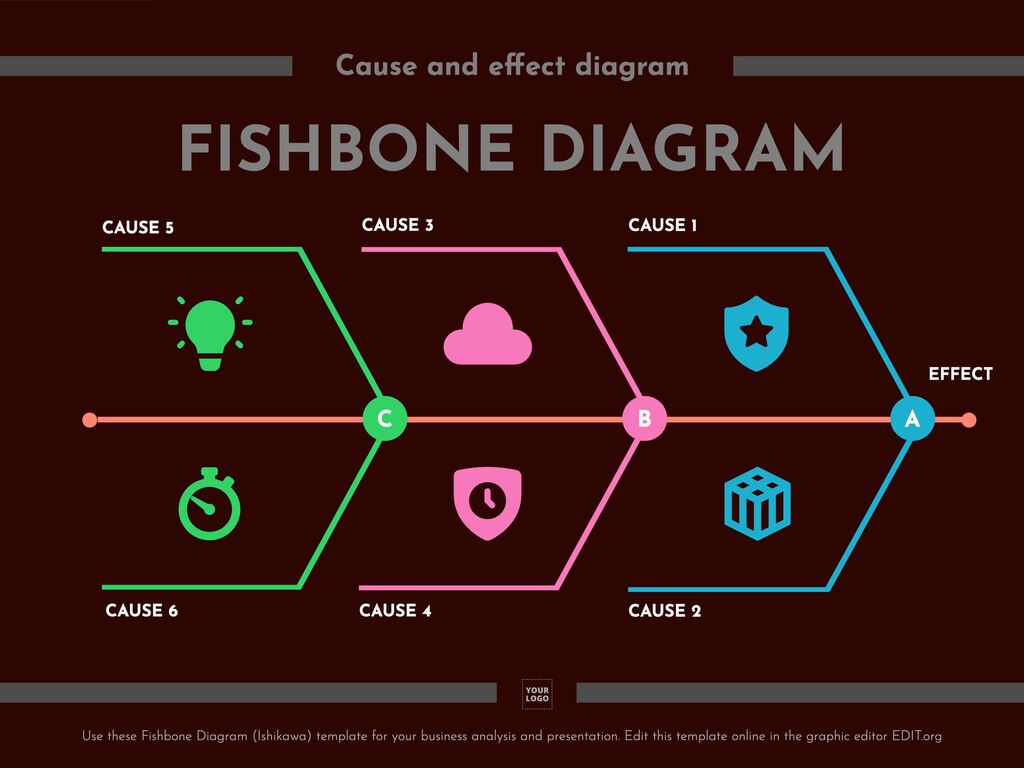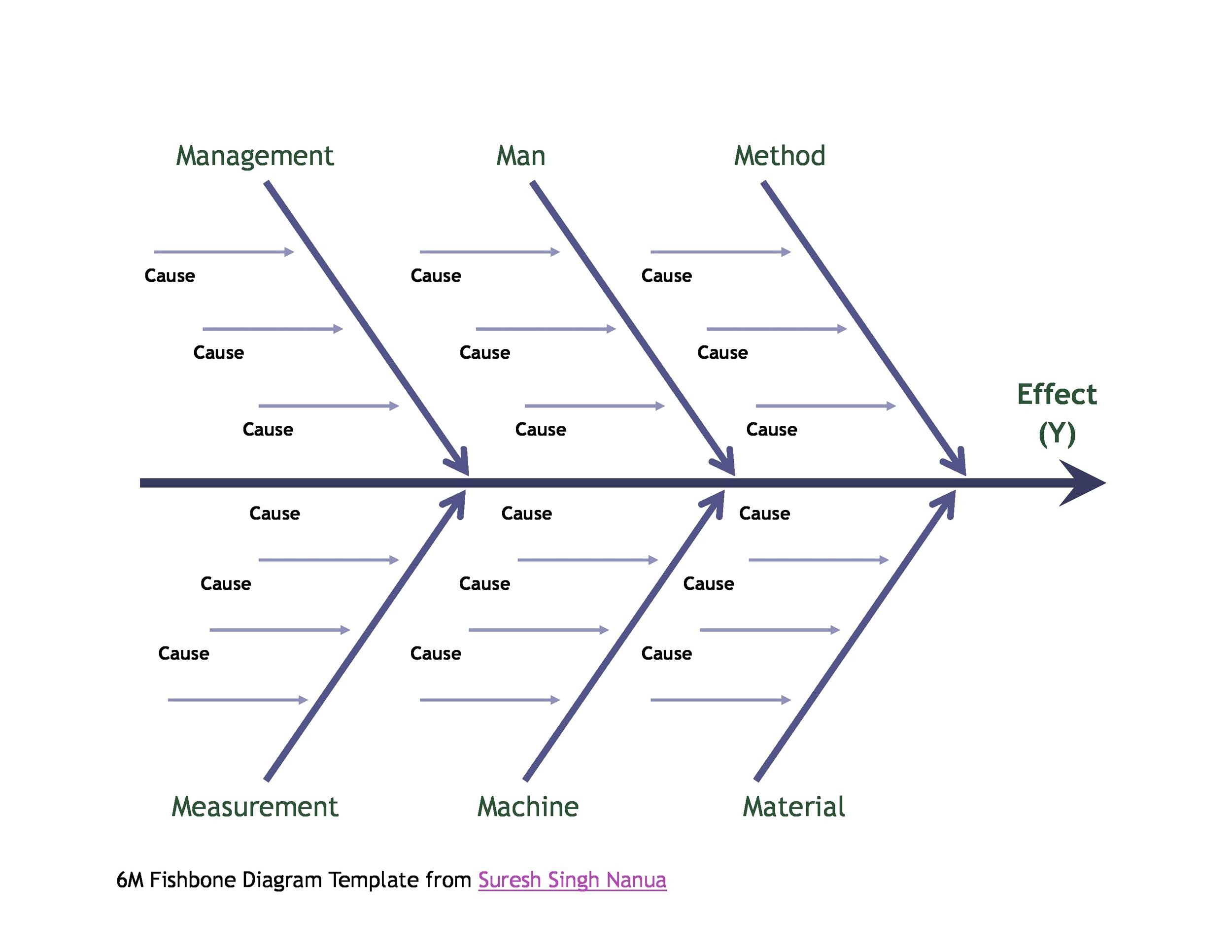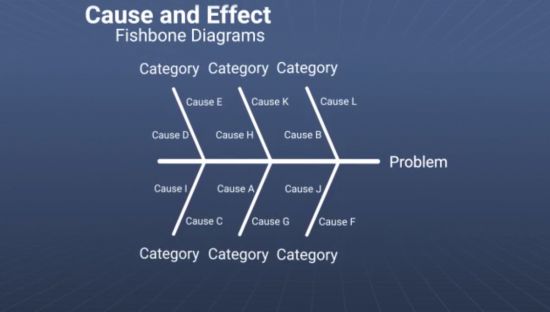

Thus the team members can participate in the solutions. It is practical to create a team and brainstorm to detect problems. Another name for this diagram is the Cause & Effect or CE diagram. Why would you recommend it to other people?įishbone diagrams are very easy to use. Hence the Fishbone Diagram is frequently referred to as an Ishikawa Diagram. We hold meetings and brainstorming sessions to detect potential causes which prevent us to improve the product quality. What is a fishbone diagram To start, a fishbone diagram (or Ishikawa diagram) is a tool to visually explore and represent the possible causes of an effect. I have been using fishbone diagrams with my team to improve production for a long time. How have you used or intend on using this resource?įishbone diagrams are quite helpful to detect the root cause of a problem. Fishbone diagrams improve decision making within the team. When can we use the Fishbone diagram When trying to identify possible causes of why something happened or might happen in an orderly manner Most effective. It is a visual technique for performing root cause analysis. The diagram is named fishbone because of its appearance. The fishbone diagram or Ishikawa diagram is a cause-and-effect diagram that helps managers to track down the reasons for imperfections, variations, defects. It was introduced by Kaoru Ishikawa as a problem-solving tool. Authors and their affiliationĪ fishbone diagram is one of the seven basic tools of quality like a pareto chart or a scatter diagram. Also called the Fishbone Diagram, or Ishikawa chart, this participatory exercise explores the links between the effects and the possible causes of an.


This resource and the following information was contributed by Kathy Castle. The diagram looks just like a fish’s skeleton with the problem at its head and the causes for the problem feeding into the spine. It is often used in conjunction with the 'Five Whys' technique. The fishbone diagram or Ishikawa diagram is a cause-and-effect diagram that helps managers to track down the reasons for imperfections, variations, defects, or failures. One of the Seven Basic Tools of Quality, it is often referred to as a fishbone diagram or Ishikawa diagram. It can also be useful for showing relationships between contributing factors. The Fishbone Diagram: Cause and Effect Root Cause Analysis (RCA) is a pragmatic, logical, common sense type approach.
FISHBONE DIAGRAM CAUSE AND EFFECT HOW TO
This will allow you to look at the broad themes as well as the specific causes for your problem.Ĭlick here for an example of how to create a fishbone diagram.This short guide describes the process of using a fishbone diagram to help uncover and visualise stakeholder perceptions of the root causes of a problem. A cause and effect diagram examines why something happened or might happen by organizing potential causes into smaller categories. There may be smaller subheadings within these groups, if so, keep them together. people, equipment, environment, communication) and place these in a similar space on the page. Once you have a number of specific reasons, look over them all and group together those of a similar theme (e.g. ‘my brother does not reply to text messages’ as opposed to ‘poor communication’). Try to make these as specific as possible (e.g. On post-it notes, write down the possible reasons for your problem. Start with your problem written on one side of the page. The fishbone diagram, also known as the cause-and-effect diagram, is a causal graphic representation of potential causes of a given problem or defect. Get together the people who experience the problem on a regular basis. It is important to understand your system before you start changing it. Fishbone diagrams are often used when investigating a significant adverse event but are also useful when looking at a quality improvement problem. We often think we know what causes a problem but on deeper investigation, it is rarely a single cause. The fishbone diagram is a visual representation of the cause and effects of a problem.


 0 kommentar(er)
0 kommentar(er)
